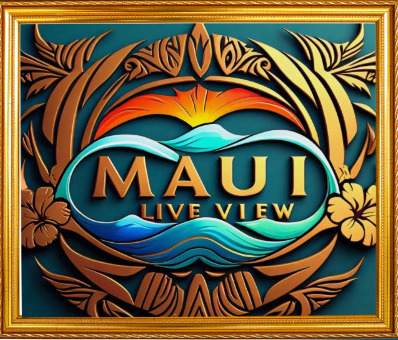Molokai, Maui Webcams
Molokaʻi FAA Webcam
Kalaupapa, Molokaʻi FAA Webcam
Molokai: The Heart of Hawaiian Tradition and History
Ancient Roots and Early Settlement
Molokai, Maui Webcams. Molokai, known as the “Friendly Isle,” is the fifth-largest island in Hawaii and is celebrated for its unspoiled landscapes and deep connection to Hawaiian culture. The history of Molokai dates back over a thousand years, to the arrival of the first Polynesians. These early settlers brought with them their traditions, language, and agricultural practices, establishing villages along the island’s coastlines and fertile valleys.
Molokai was home to several powerful chiefs and held a unique position within the Hawaiian archipelago. The island was revered for its spiritual significance and was often regarded as a place of refuge and healing. Ancient heiau (temples) and fishponds, which were constructed to support the local population, still dot the landscape today, bearing witness to the island’s storied past.
European Contact and Missionary Influence
The first European to set foot on Molokai was Captain George Dixon in 1786, who arrived during an expedition in the Pacific. However, it was not until the early 19th century that Molokai began to experience significant changes with the arrival of Christian missionaries. In 1832, Reverend Harvey Hitchcock and his wife, Rebecca, established the first mission station on the island.
The missionaries introduced new agricultural techniques, built schools, and promoted literacy among the native population. They played a crucial role in recording and preserving Hawaiian oral traditions, which have become invaluable to understanding the island’s history.
The Great Mahele and Land Division
The Great Mahele of 1848 was a transformative event for Hawaii, leading to the division of land among the Hawaiian monarchy, chiefs, and commoners. Molokai’s land was divided, and large portions were acquired by private individuals and businesses. This period marked the beginning of commercial agriculture on the island, with the establishment of ranches and the introduction of crops such as sugarcane and pineapple.
The Leprosy Colony at Kalaupapa
One of the most poignant chapters in Molokai’s history is the establishment of the leprosy colony at Kalaupapa. In the 1860s, leprosy (Hansen’s disease) became a significant health crisis in Hawaii. To contain the spread of the disease, the Hawaiian government established a settlement at Kalaupapa, an isolated peninsula on the northern coast of Molokai, in 1866.
Over 8,000 individuals diagnosed with leprosy were forcibly relocated to Kalaupapa, where they lived in isolation from the rest of society. Among the most notable residents was Father Damien, a Catholic priest who dedicated his life to caring for the patients at Kalaupapa. His efforts to improve living conditions and provide medical care earned him recognition as a saint in the Catholic Church. The Kalaupapa National Historical Park now serves as a memorial to those who lived and died in the settlement.
Plantation Era and Economic Shifts
The late 19th and early 20th centuries saw the rise of the plantation economy on Molokai. Sugarcane and pineapple plantations became the island’s primary industries, attracting laborers from various ethnic backgrounds, including Japanese, Chinese, Filipino, and Portuguese immigrants. The plantations brought economic growth and development to Molokai, but also led to significant social and environmental changes.
The decline of the sugarcane and pineapple industries in the mid-20th century led to economic challenges for Molokai. The island’s economy shifted towards ranching, agriculture, and tourism, although the latter remained relatively modest compared to other Hawaiian islands. Molokai has often resisted large-scale tourism development, seeking to preserve its rural character and cultural heritage.
Modern Molokai: Balancing Tradition and Change
Today, Molokai is a testament to the enduring spirit of Hawaiian culture and tradition. The island’s residents, many of whom are Native Hawaiians, continue to practice traditional customs and maintain a strong sense of community. The preservation of historical sites, such as the ancient fishponds and heiau, remains a priority for the island’s inhabitants.
Molokai’s economy is diverse, with agriculture playing a significant role. The island produces a variety of crops, including coffee, macadamia nuts, and vegetables. Sustainable farming practices and renewable energy initiatives have also gained traction, reflecting the community’s commitment to environmental stewardship.
Tourism on Molokai is characterized by its focus on eco-tourism and cultural experiences. Visitors are drawn to the island’s natural beauty, including its pristine beaches, lush valleys, and dramatic sea cliffs. Activities such as hiking, snorkeling, and exploring historical sites offer a glimpse into the island’s unique heritage.
Cultural Preservation and Future Prospects
Molokai faces the challenge of balancing development with the preservation of its cultural and natural resources. Efforts to protect the island’s environment, support local agriculture, and promote cultural education are ongoing. Organizations such as the Molokai Land Trust and the Molokai Museum and Cultural Center play a crucial role in these endeavors.
Looking to the future, Molokai’s residents are dedicated to maintaining their island’s identity while addressing the economic and social challenges that arise. The island’s history is a testament to its resilience and adaptability, and its people continue to honor their heritage while embracing sustainable practices.
From its ancient Polynesian roots to its modern-day efforts to preserve its cultural and natural heritage, Molokai’s history is a rich tapestry of tradition, resilience, and community spirit. The island’s journey through time is a powerful narrative of cultural evolution and the enduring aloha spirit of its people.
For more information, visit the official Maui County, Hawaii website.
